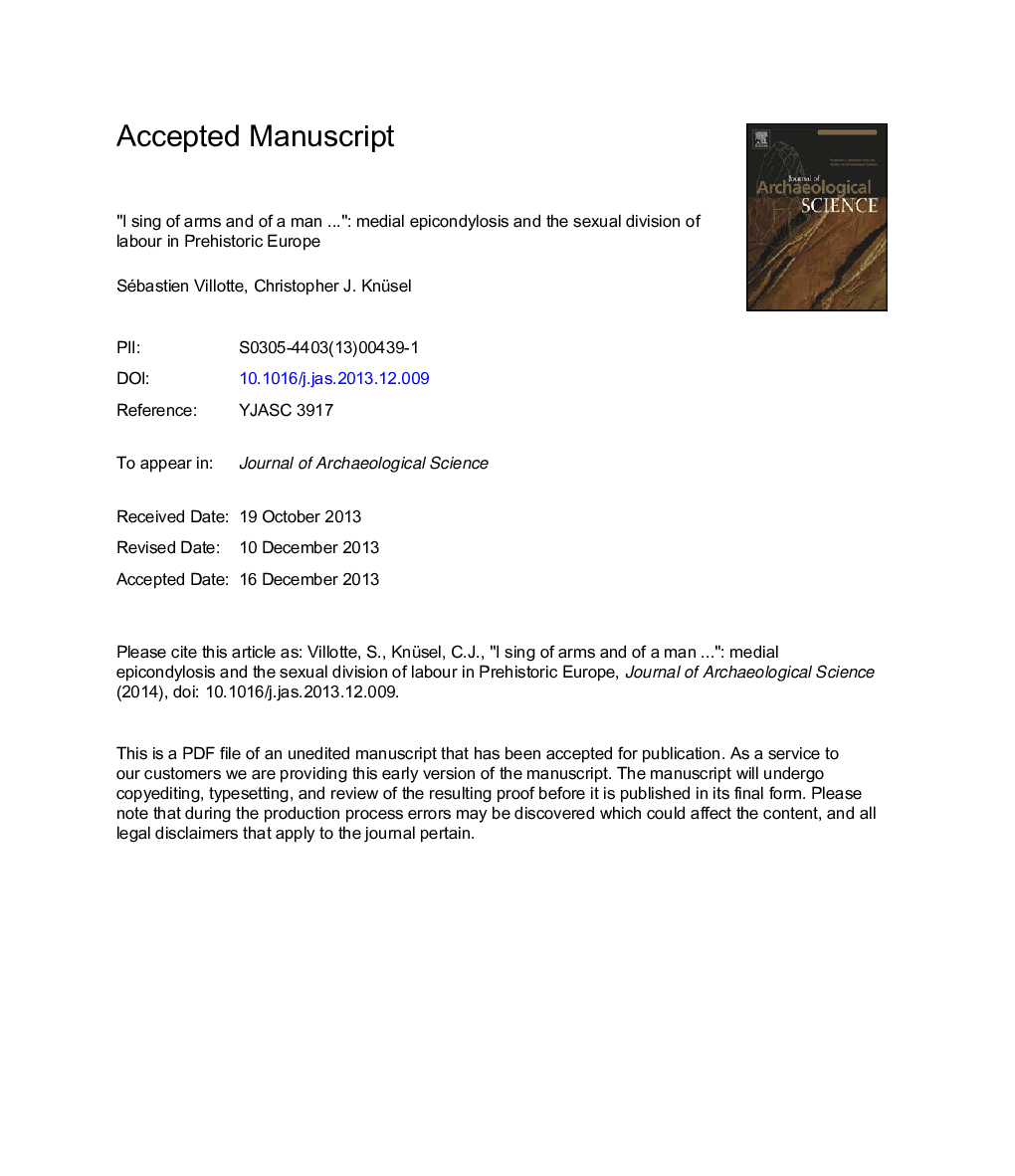| Article ID | Journal | Published Year | Pages | File Type |
|---|---|---|---|---|
| 7443632 | Journal of Archaeological Science | 2014 | 29 Pages |
Abstract
Sexual division of labour in European prehistory is usually inferred by indirect means: ethnographic analogy, pictorial representation, or from grave inclusions. The study of skeletal activity-related morphology seems the most direct means by which to interrogate the question of sexual division of labour in past societies. In this paper we present the results of an analysis of enthesopathies (i.e. lesions of the tendon attachments) of the elbow in three time-successive population samples spanning the prehistoric, pre-industrial historic, and modern European eras. We employ an innovative analytical procedure, the lateral to medial epicondylar ratio (L/M ratio) to assess limb use. Results indicate a tendency for lateral epicondylosis in all samples, except for prehistoric males, who possess medial epicondylosis more frequently, and for the right side only. The increased prevalence of pathological changes of the right medial epicondyle suggests lateralized limb use that corresponds with “thrower's elbow”. This indicates that males, but not females, preferentially employed movements involving throwing motions in these hunter-gatherer and early farming groups. Based on this evidence we postulate the existence of a persistent sexual division of labour in these prehistoric European populations involving one or several strenuous activities linked to unilateral limb use.
Keywords
Related Topics
Physical Sciences and Engineering
Materials Science
Materials Science (General)
Authors
Sébastien Villotte, Christopher J. Knüsel,
